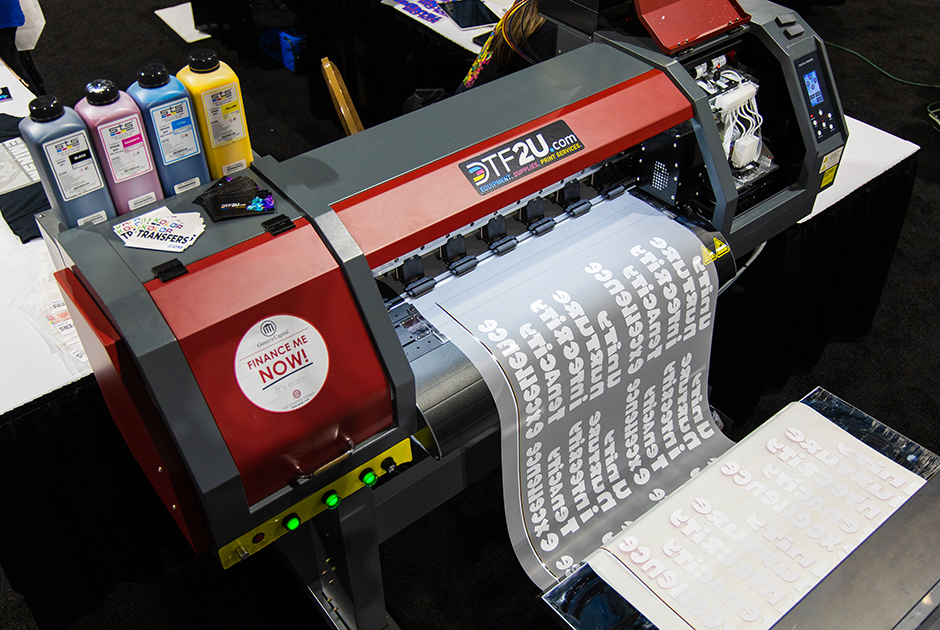DTF Printing Proficiency: Raise Your Textile Creations with Direct-to-Film Technology
Mastering DTF Printing: Idea for Getting Vibrant and Resilient Prints
On the planet of textile printing, accomplishing vivid and resilient prints is a desirable skill that can raise the top quality of your result. Mastering DTF (Straight to Movie) printing requires a blend of technological expertise, precision, and interest to information. From picking the right materials to make improvements print settings and improving post-printing ending up strategies, there are numerous elements that can influence the result of your prints. Comprehending how to browse these ins and outs can make all the distinction in between a sub-par outcome and a truly remarkable one.

DTF Printing Essentials
For those new to the world of fabric printing, recognizing the basics of DTF printing is important to grasping this ingenious technique. Direct to Movie (DTF) printing is a contemporary method that entails moving designs from an unique movie onto various textiles making use of a warm press. Unlike traditional approaches like screen printing, DTF offers benefits such as dynamic colors, complex detailing, and the capacity to print on varied products like cotton, polyester, and blends.
The process starts by printing the layout on an unique DTF film making use of a compatible printer with CMYK or CMYKW ink collections. When the layout is printed, it is after that healed with a heat press to create a long lasting and long-lasting print. DTF printing is understood for its capacity to replicate complex styles with high accuracy and color precision, making it a popular selection for companies wanting to develop customized garments, promotional products, and more.
Selecting the Right Products

Just as crucial is the option of the sticky powder. The adhesive powder acts as a bonding agent between the published layout and the textile, so it has to have solid bond residential or commercial properties to guarantee a lasting and resilient transfer. Different textiles might need different types of adhesive powders, so it is essential to match the powder to the textile kind for optimum outcomes - DTF Printing. By very carefully choosing the right products for DTF printing, printers can improve the high quality, vibrancy, and longevity of their prints.
Enhancing Publish Settings
When intending to achieve the ideal lead to DTF printing, meticulous focus to optimizing print setups is important for ensuring premium and precise transfers onto fabrics. One key element to consider when enhancing print setups is the resolution. Greater resolutions usually cause sharper and much more in-depth prints, enhancing the general top quality of the transfer. Additionally, readjusting the ink thickness can assist guarantee and attain vivid colors that the style attracts attention on the fabric.
While enhancing the rate can boost performance, it might jeopardize the final print's clarity and shade saturation. Trying out with various rates and observing the results can help determine the optimal setup for each print task.
Additionally, tweak color profiles and ensuring correct shade management are important for achieving exact and constant shades across different prints. By adjusting color setups and accounts, printers can reduce shade variances and produce uniform outcomes, enhancing the total print high quality and customer satisfaction.
Preparing Art Work for DTF Printing
Transform the art work to CMYK color setting to make certain This Site that the shades translate accurately from screen to print. Keep in mind to mirror the last layout prior to printing to make sure that it transfers properly onto the garment. By complying with these actions and paying close focus to the information, you can prepare art work that is maximized for vibrant and long lasting DTF prints.
Post-Printing Finishing Techniques
Executing efficient post-printing completing methods is vital to boosting the longevity and aesthetic charm of DTF prints on fabrics. When the printing process is total, applying heat to the printed layout is essential (DTF Printing). Warmth not only aids in curing the ink but additionally makes certain that the shades are resilient and dynamic. A warm press maker established at the suggested temperature and stress setups can assist accomplish optimal outcomes.
After warmth pushing, peeling off the PET movie thoroughly is an important step. This process must be done slowly and steadily to stop any type of damages to the print. When the film is gotten rid of, the print may need additional healing time to even more explanation establish the ink into the textile. This step aids improve the washability and durability of the print, guaranteeing it can endure numerous laundry cycles without fading or fracturing.
Furthermore, cutting any kind of excess film around the layout can give the final print a tidy and specialist appearance. Taking the time to appropriately end up DTF prints post-printing can considerably influence the total quality and durability of the textile layout.

Conclusion
In verdict, understanding DTF printing requires an extensive understanding of the essentials, picking appropriate materials, enhancing print setups, preparing art work properly, and utilizing post-printing finishing methods. By complying with these tricks and ideas, one can attain resilient and dynamic prints that satisfy their preferred high quality standards. Consistent method and focus to information are necessary in attaining effective end results in DTF printing.
From picking the ideal products to adjust print setups and improving post-printing completing methods, there are various elements that can influence the outcome of your prints. Unlike traditional methods like display printing, DTF uses benefits such as official source dynamic colors, complex describing, and the capability to print on diverse materials like cotton, polyester, and blends.
Once the layout is published, it is after that healed with a warm press to produce a long-lasting and sturdy print.When intending to achieve the ideal outcomes in DTF printing, precise attention to optimizing print setups is vital for making sure accurate and premium transfers onto fabrics.In conclusion, understanding DTF printing requires a comprehensive understanding of the essentials, choosing appropriate products, optimizing print setups, preparing artwork properly, and using post-printing finishing strategies.